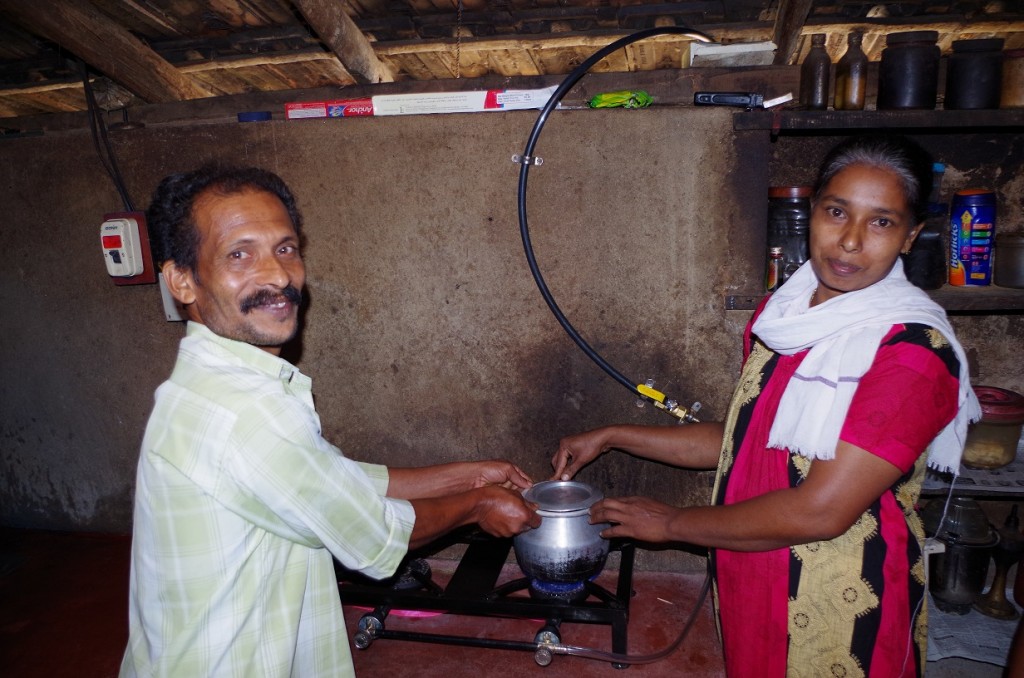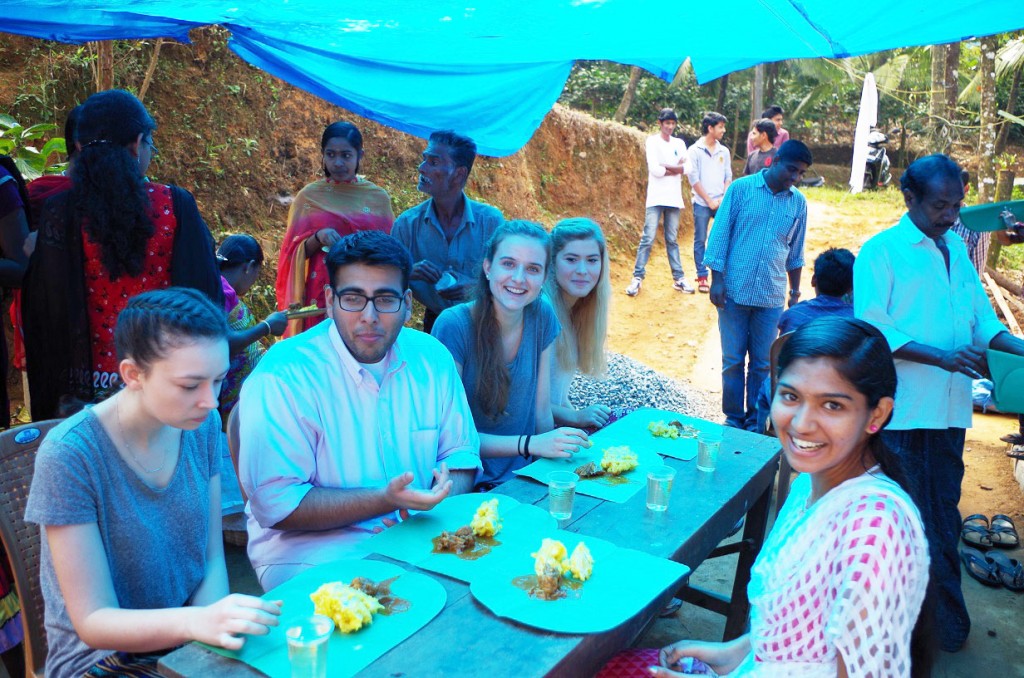The month of January here in Prashanthagiri started off not only in celebration of the new year, but also in celebration of the completion of Phase I of the Profugo Biogas Program, resulting in the construction of 3 digesters for three families. Through the Profugo Biogas Program we are implementing household biogas digesters for the most disadvantaged families in the village. Thanks to a donation by Dr. Leif and Dr. Lena Oxelmark from the University of Gothenburg in Sweden, a total of 10 digesters will be constructed this year.
The digesters are waste to energy projects that harvest the biogas naturally produced in the decomposition of organic materials through anaerobic fermentation. Microorganisms break down cow waste that is inserted into the digester daily and in the process produce biogas, the majority of which (50-70%) is combustible methane. By capturing the biogas produced in the di gesters, families can burn it in their stoves as cooking fuel. The 2-cubic meter digesters being constructed produce enough biogas to meet the daily cooking demand of a family.
gesters, families can burn it in their stoves as cooking fuel. The 2-cubic meter digesters being constructed produce enough biogas to meet the daily cooking demand of a family.
Not only does biogas give families in the village access to an alternative energy source, it also decreases dependence on the use of liquid petroleum gas (LPG) and wood burning for cooking. LPG is an expensive fossil fuel source that needs to be imported into the village. The use of biomass or wood for cooking is a significant contributor to deforestation in the village and severe respiratory illnesses due to heavy smoke exposure in the home. The waste slurry that exits the digester after methane capture can also be used as a nutrient rich fertilizer. The benefits of biogas are remarkable and they all originate from what once was considered a waste. What reason is there not to celebrate?
Late in the morning, the village gathered to inaugurate the completion of Pha se I. In the presence of the three beneficiaries, the Villanova Engineering Service Learning Team, the village community, and Dr. Abraham, the ribbon over the biogas stove was cut and the gas was lit with a ceremonial candle. Milk was then boiled and passed around to drink. It was a perfect accompaniment for the Kappa (tapioca) and chicken served to everyone as well. We are looking forward to the completion of 3 more digesters for Phase II in late January and the remainder of the funded digesters later this spring. Cheers to these initial 10 digesters and hopefully many more to come in the future! We may not be turning the water into wine to keep the party going like Jesus did in Cana, but we’re doing our best to serve others and keep the party going by turning cow waste into energy.
se I. In the presence of the three beneficiaries, the Villanova Engineering Service Learning Team, the village community, and Dr. Abraham, the ribbon over the biogas stove was cut and the gas was lit with a ceremonial candle. Milk was then boiled and passed around to drink. It was a perfect accompaniment for the Kappa (tapioca) and chicken served to everyone as well. We are looking forward to the completion of 3 more digesters for Phase II in late January and the remainder of the funded digesters later this spring. Cheers to these initial 10 digesters and hopefully many more to come in the future! We may not be turning the water into wine to keep the party going like Jesus did in Cana, but we’re doing our best to serve others and keep the party going by turning cow waste into energy.

Leave a Reply
You must be logged in to post a comment.